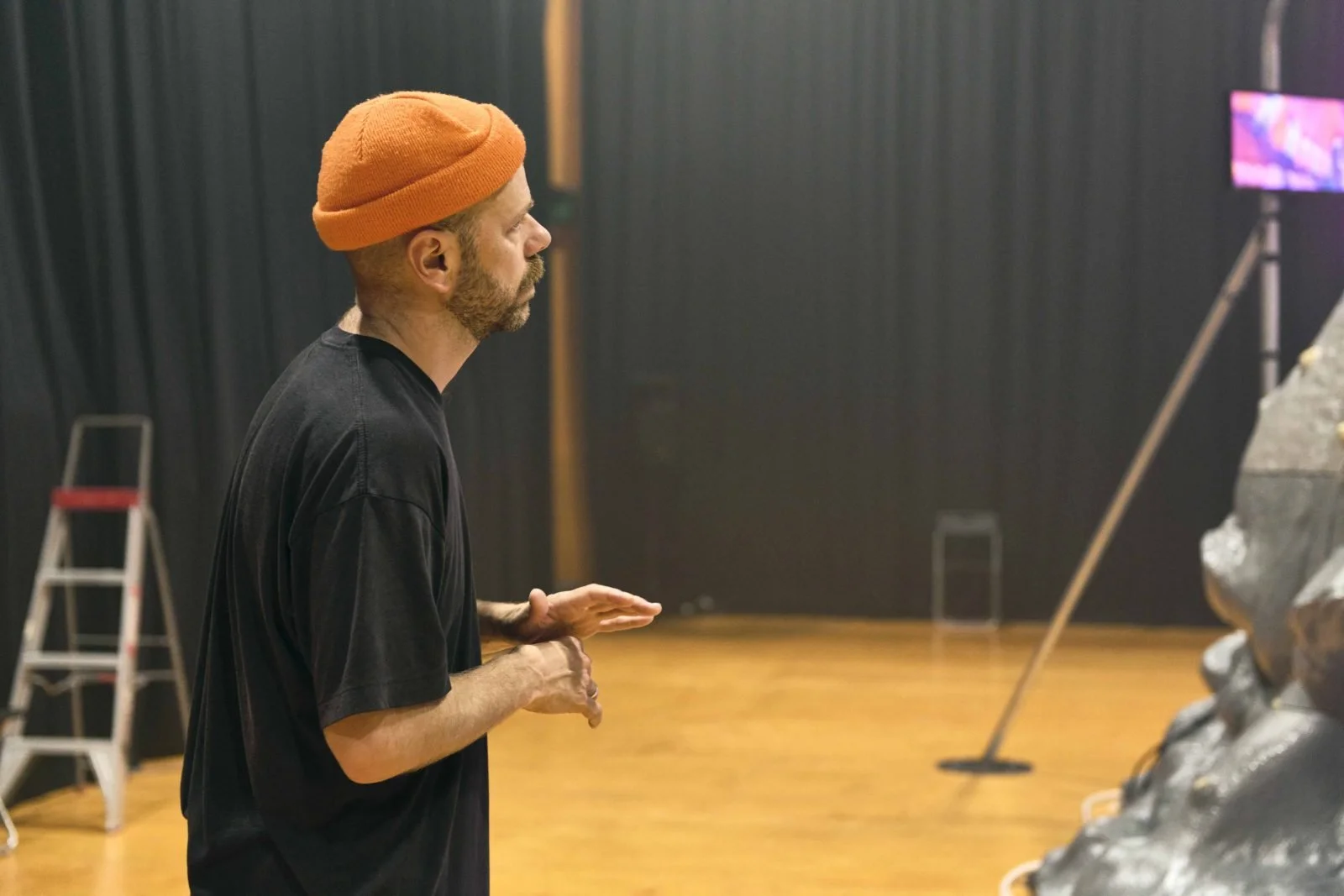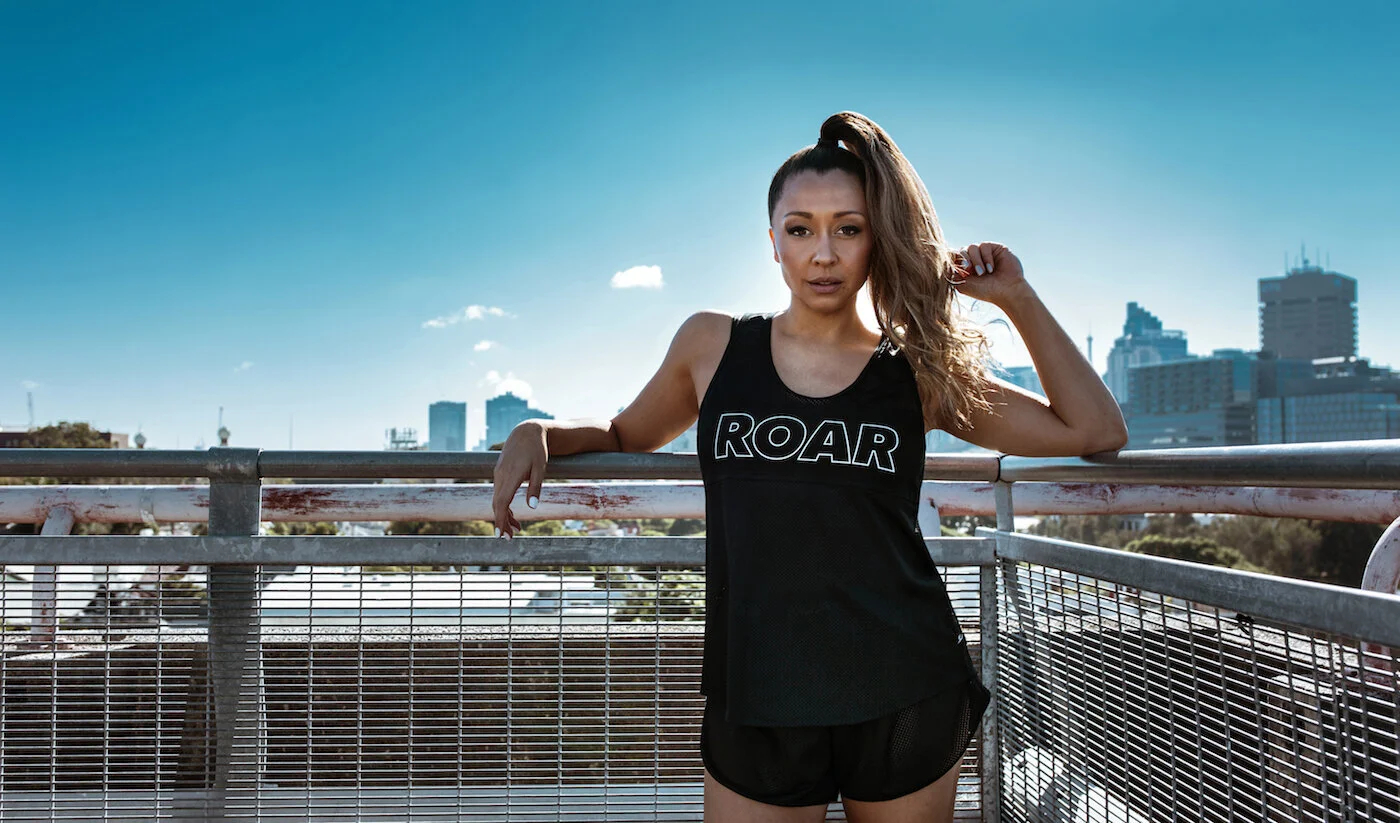TEXT BY OWEN ALLEN
Dance as a way to be with the body as possibilities for a new way of moving in life - - - and a new culture shows up.
In 2019, I took workshops on ‘a language of body’ from my rEvolve project, for a small international tour commencing with the Global Transformations Conference in Hollywood (a group of 50 people from diverse professional backgrounds), to smaller groups of younger and older adults in Denver, Florida, and North Carolina, and onto the International Scientific Conference on Movement and Cognition (MovementIs) in Tel Aviv, Israel. Back in Australia, I also took the workshop to the Newkind Social Change Conference in Tasmania in January 2020, to another group of around 50, mainly younger adults involved in environmental activism. The overwhelming review was positive from across these diverse participant groups.
The reaction from the participants had one strong thread - the surprising ease and enjoyment with which the complex movement phrases are drawn forth and ‘memorised’ in the body, and made available for a larger conversation with partners, within a 2 hour session. From the MovementIs Conference movement rehabilitation professionals in attendance were excited by the prospects of this orientation of training for people with movement disorders. In Florida, the Dance Forum Collective used the training to support a work they are creating on the water ecology of the Gainesville region. See the latter at https://www.youtube.com/watch?v=iSPwtrc_P20&t=26s .
My Entry into the Work
….. She carried a large stone across the stage, two-thirds squatted, waddling, pausing between each step, arms long to the stone as if carrying a heavy weight. When she got to the other side, she carefully put the stone down. She straightened and turning with easy purpose walked back across the stage and off. Soon, she came on again, carrying a stone, two-thirds squatted waddling, pausing between each step, arms long to the stone as if carrying a heavy weight.
… She repeated this trip several times while her co-presenter spoke to photos about a flood rent Australian landscape, until a loose cairn of large stones marked the presentation.
I found myself in that landscape, neither as a thought nor a memory, but as an experience of it, something in my whole body and limbs, something of my being in the landscape. Right there, I saw the possibility of dance as a communication that shows up in the bodies of each other, rather than we dissect an issue with a critical intelligence as if the matter and ourselves are disassociated from form and the relationship of forms / bodies. (Author, DANscienCE Festival, Canberra, 2013) .
Working from that possibility, in 2016, five other rural men and I perform our work, The Forging of Men, to a small audience of some 30 family and friends. Their responses ranged across: ‘it felt like something ancient’; emotionally evocative; I felt innocence, love, curiosity, joy, rage, sadness, beauty and support; a real sensory reaction to that; gentleness, different roles for men, connectiveness, camaraderie, and spiritual communion; very strong and fluid; impressed that local ‘blokey’ men performed so well and communicated so well together; showed lots of aspects of masculinity without dodging issues or writing too large; enjoyed their mutual trust and openness; it immersed me.
https://www.youtube.com/watch?v=v51D_u2zoZk
Why does Dance Matter, Anyhow? - A History of DisEmbodiment
Some brain researchers (Iain McGilchrist, The Master and his Emissary) have suggested that our first consciousness is our embodied state. However, for most of us, our consciousness is represented by our thoughts and what we can pay attention to as a thought, our body just a vehicle for the riding.
How did we come to this impasse, and what has it got to do with dance?
The problem lies, it seems, with language. We can think about language as a development of four communication mechanisms: 1) our physiology is communicating with our mother’s physiology from within the womb: 2) our emotions are present and already in motion when we are born; 3) our physical or structural language as we learn purposeful movement; and 4) our listened to and spoken word.
What is important to see, here, is that our physiological, emotional, and physical languages are intimately engaged in feedback loops that gradually pull us out of an undifferentiated morass to a differentiated awareness that we can call the embodied state.
The specialised development of movement as gesture is considered the first purposeful language, a device for explaining to others ‘why all the fuss’. The evolution of purposeful language is thought be a bonding of the development of gesture and verbal language. (https://www.thoughtco.com/language-origins-theories-1691047) Our brains are pattern builders with certain qualitative templates, that designs by a type of this-goes-with-that game. The thing we call intelligence is a conscious purposefulness that can pick through existing networks for materials that could be used in alternative ways. These processes create fine art, dance, singing, poetry, and mathematics.
The human physicality that developed gesture in the first place, comes with a rich potential: hands with fine fingers and opposable thumbs; an upright stance and running; a large forebrain for decision-making; and a low larynx for speaking and singing. These come together as a package of advantage that then allowed sophisticated verbal language to develop.
The evolution of the word with gesture, plus dance, is the story of the development of the social human - the real success story of us. Dance, as elaborate repetitive movements, supports rituals for special occasions (weddings), group identities (folk dances), information systems (histories), and recuperation (grieving / healing).
However, it seems that, eventually modern human has become distracted and overwhelmed by the word from our physicality. Our gestural language remained undeveloped in comparison. We can see this in the obvious versatility displayed by the small number of movers world-wide who make work in the field.
The sophistication of the word drove the complexity of societies. Yet, as we became more linguistically powerful, our embodied expressions remain less differentiated, often working in the state called the sub-conscious. Consider that the integrated neural loops that effect physiological functions, emotional regulation, bodily sensations, and motor activation states, are not so much tamed as denied and imprisoned by the overwhelmingness of ‘thinking about’ rather than experiencing.
While the word creates the powerful meta-story so that a society of billions of people can come together, on a personal level it has created a state of delusion that has us, routinely, harming each other or suffering.
Every moment of our lives is tied to an embodied response that draws us towards (pleasure) or away (pain (sic)). At a young age, the embodied choice that steers the human being away from its discomfort and towards its pleasure, is, occasionally, of such impact that it amplifies and subdues aspects of our movement and speaking in the world. This dynamic helps us with our fitting in with society. It helps create our identity. Meanwhile, our verbal and written language is literally editing after the fact. We find ways to tell the story of our to and fro so that we can assert how we fit in with society’s meta-stories (culture), our immediate social group, and the circumstances of our embodied responses.
By adulthood, most of us show up with predictable responses to the various circumstance that arise. People around us know us as that is who we are. We also know ourselves as that is who we are. This is a delusion, and there are two aspects to it:
1. that the story of how we wound up being as an adult is what we need to move through the world as an adult; and
2. that we are consciously in control of our choices.
rEvolution
The twofold delusion points to its own remedy: 1) the development of a finely-tuned embodiment giving us awareness of our embodied choices and; 2) a personal agency in embodied responses as an aspect of being an adult and the getting of wisdom.
The modern planet-wide conversation in diverse embodied expressions and practices has shown the potential of human motion for an immense expressive ability. Our human physicality is capable of an extraordinary range of motion, speeds, and rhythms, within parts of sequences and in the whole expression, multiplied by their function in space, into astronomical possibilities. Yet, even among movers, there may still be only a low level of diversity in movement expression across the planet.
I propose that realising the full potential of the human neuro-motor system requires a deconstructive approach to human movement, and that, one of the pathways worthwhile exploring is to develop a movement system as a language that is as sophisticated and common as our verbal and written languages. The art for such an experimentation is dance.
Setting up the Experiment: Making Moves
We could engage our potentiality by looking at the success of the word. Sophisticated verbal and written languages are based on a small number of basic units from which a very large number of expressions are realised. For speech the basic units are called phonemes. For writing, they are called graphemes. It is at the smallest or basic units of motion that we might begin to explore the possibility of a language of body as sophisticated and common as the verbal and written language by accessing the diversity of our bodies to the smallest unit, even stillness. As the basic units of a language of movement, they could, therefore, be called movements.
If we accept that there are basic units of movement that almost everyone could become conversant, due to the magnitude of possibilities for movement, we may not come to a definite list of movemes. What might be important is to bring increasing numbers of people into a great social experiment in movement as performative conversation (dance). I have designed a quite straightforward model (The rEvolve Program) for bringing anyone into a space with anyone else and, through collaborative processes, bring forth a work. https://www.phoenixfunctions.com.au/revolve.html
The first order of this process, what I call the front end, is a series of movement problems to be solved by the individual dancer, and partners. This problem-solving approach favours the ability for presencing the body and the most subtle possibilities it holds. The work asks the dancers to be in embodied and verbal conversation with each other, as a collaboration of diverse abilities. The dancers are provoked to fully consider the actual ability of their partner(s). The accomplished dancer might find themselves partnered with a person with a paralysed half. The challenge for both being, how to reproduce or combine or juxtapose the movement possibilities of each, and, eventually, bring out the full conversation. This process could be thought of as bringing the full potential of all dancers, and while this is true, I suggest avoiding thinking of it in this way, in case by ‘potential’ we get hooked up on the format of the athletic dancer. If anything, full potential in this context would mean the potential for collaboration between dancers and whatever they bring to the floor.
Once the ‘front-end’ work is established, a number of other creative approaches guide the dancers in designing performance. The performance is a integration of thematics chosen by the dancers, and aesthetics as can be brought to life in synchronicities and juxtapositions by the diversity of bodies, as arrives in the space of performance.
……… And a new culture shows up.










